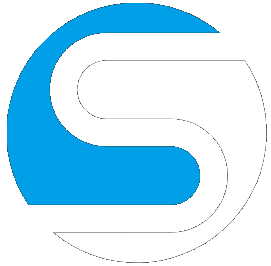Module 3: The Agile Release Train (ART)
3.1 All Aboard! The Engine of Value Delivery
Welcome to Module 3. In the previous modules, we established the “why” behind SAFe—the mindset, values, and principles that form its foundation. Now, we step onto the platform and get acquainted with the engine that drives value delivery at scale: the Agile Release Train (ART).
If individual Agile teams are the powerful locomotives, the ART is the entire, fully-loaded freight train. It’s not just one engine, but a coordinated set of engines and railcars, all moving together on the same track, at the same speed, toward a common destination. The ART is the primary value delivery mechanism in SAFe and the living embodiment of the “team-of-teams” concept. 2 It’s how an organization moves from optimizing individual team performance to optimizing the flow of value across the entire enterprise.
3.2 What is an Agile Release Train (ART)?
An Agile Release Train (ART) is a long-lived, self-organizing team of Agile teams that plans, commits, and executes together. Think of it as a virtual organization, typically comprising 5 to 12 teams (about 50 to 125 people), that is organized around a specific business value stream.
Key characteristics of an ART include:
- Cross-Functional: An ART possesses all the capabilities needed to define, build, test, deploy, and release solutions to the customer. This includes not just software developers and testers, but also hardware, firmware, operations, and any other specialists required to deliver value.
- Long-Lived: Unlike temporary project teams that disband after completion, ARTs are stable and persistent. They are organized around the flow of value, not a specific project, which allows them to build expertise and improve performance over time.
- Aligned to a Common Mission: All teams on the ART work from a single Program Backlog and share a common vision, roadmap, and set of objectives for each Program Increment (PI). This ensures that while teams may be working on different features, their efforts are all contributing to a larger, cohesive solution.
3.3 The “Team-of-Teams” Concept
The power of the ART lies in the “team-of-teams” concept. SAFe doesn’t seek to change the inner workings of a high-performing Scrum or Kanban team. Instead, it provides the structure that allows many of these teams to function as a single, synchronized unit.
Imagine an orchestra. Each section (violins, brass, percussion) is a team of skilled musicians. They practice their individual parts, but their true power is realized only when they play together, guided by a conductor and a single sheet of music. The ART is the orchestra, the Agile teams are the sections, and the shared vision and PI Objectives are the sheet music.
This approach provides alignment and helps manage risk by establishing a program-level cadence and synchronization. It ensures that dependencies are identified and managed, integration happens frequently, and the collective output of all teams creates a valuable, integrated solution.
3.4 The Conductors: Key Roles of the ART
To ensure the train runs smoothly and stays on track, SAFe defines several key roles at the Program Level. These roles provide leadership, guidance, and facilitation for the entire ART.
- Release Train Engineer (RTE): The RTE is the servant leader and coach for the Agile Release Train. Often described as the “chief Scrum Master” of the train, the RTE’s primary responsibilities include facilitating ART events like PI Planning, escalating impediments, managing risk, and driving relentless improvement across the program. They are focused on optimizing the flow of value and ensuring the ART functions as a cohesive unit.
- Product Management: Product Management is responsible for the “what”—they have content authority for the ART. They own and prioritize the Program Backlog, define the features to be built, and articulate the vision and roadmap for the train. They work closely with business stakeholders and customers to ensure the ART is building the right solution to meet market needs.
- System Architect/Engineering: This role provides the overall technical vision and guidance for the ART. The System Architect ensures the solution is architecturally sound, defines non-functional requirements, and identifies the “architectural runway” needed to support upcoming features. They provide the technical guardrails within which the teams can innovate and build.
- Business Owners: These are the key stakeholders who have the ultimate business and technical responsibility for the value delivered by the ART. They are not just passive observers; they actively participate in key ART events like PI Planning and System Demos to provide guidance and ensure the train is aligned with business outcomes.
3.5 Diagram: Visualization of an Agile Release Train
The following diagram illustrates the structure of an Agile Release Train, showing how the leadership triad guides the team of teams toward a common goal.

3.6 How the Train Stays on the Tracks: ART Principles
An ART doesn’t just happen; it operates on a set of core principles that ensure alignment, predictability, and continuous flow.
- A Fixed Schedule: The ART adheres to a predefined schedule, operating in a timebox called a Program Increment (PI), which is typically 8 to 12 weeks long. This fixed cadence makes planning and delivery consistent and predictable.
- Synchronization: All teams on the train work on the same PI cadence and use synchronized two-week iterations (sprints). This synchronization is what makes large-scale, cross-team planning and integration possible.
- Known Velocity: The ART estimates how much work it can deliver in a PI based on historical performance data. This allows for more reliable planning and forecasting.
Develop on Cadence, Release on Demand: This is a critical SAFe principle. While the development of the solution happens on a predictable rhythm (the PI cadence), the release of that value to customers is flexible and can happen whenever the business needs it. This decouples the development schedule from the release schedule, providing maximum business agility.

